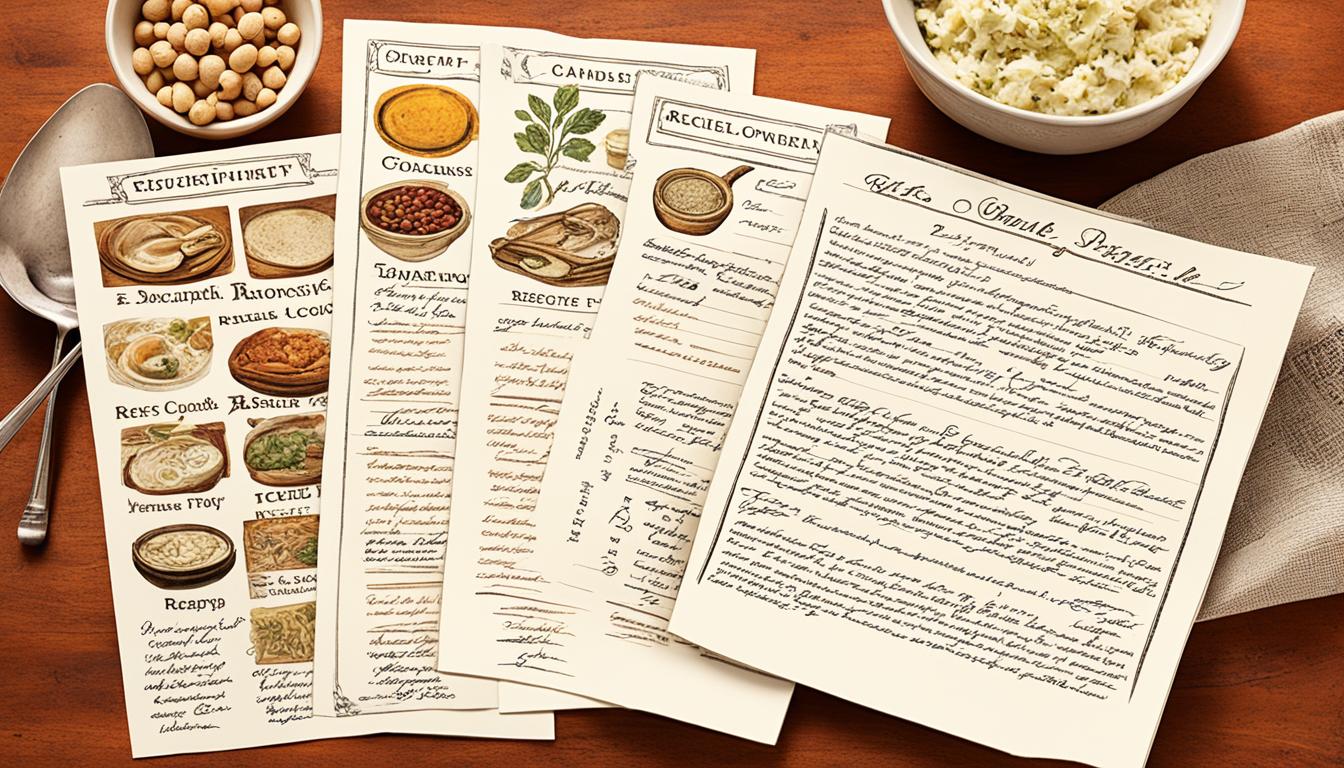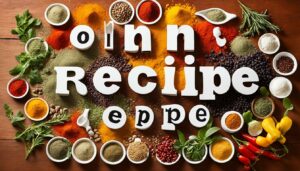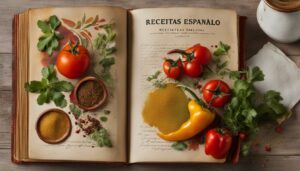Have you ever wondered why recipes are called receipts? It seems like an odd choice of words, considering we associate receipts with financial transactions. But there was a time when the terms “recipe” and “receipt” had different meanings and were used interchangeably. So, why are recipes called receipts?
The culinary etymology of these words is fascinating. The word “receipt” has a more distinguished lineage, dating back to Chaucer’s Canterbury Tales. On the other hand, “recipe” originated from Latin and was initially used in medical prescriptions. How did these terms evolve over time to become synonymous with cooking instructions? Let’s explore the historical origins of these terms and unravel the linguistic journey of recipes and receipts.
Contents
- 1 The Difference Between Recipe and Receipt
- 2 Origins of the Word Receipt
- 3 The Rise of the Term Recipe
- 4 Use of Receipt in Historical Context
- 5 Regional Variations in Pronunciation
- 6 Cultural Significance of Recipes and Receipts
- 7 Modern Usage and Understanding
- 8 Recipe and Receipt in Literature and Media
- 9 Keeping Track of Receipts
- 10 Conclusion
- 11 FAQ
- 11.1 What is the difference between recipe and receipt?
- 11.2 Where does the word “receipt” come from?
- 11.3 What is the origin of the word “recipe”?
- 11.4 How were recipes referred to in the past?
- 11.5 How are recipe and receipt pronounced?
- 11.6 Are recipes and receipts culturally significant?
- 11.7 What is the modern usage of recipe and receipt?
- 11.8 How have recipe and receipt been referenced in literature and media?
- 11.9 How important is keeping track of receipts?
- 11.10 Why is it important to understand the historical origins of recipe and receipt?
- 12 Source Links
Key Takeaways:
- The terms “recipe” and “receipt” were once used interchangeably, but they had different meanings.
- The word “receipt” has a more distinguished lineage, dating back to Chaucer’s Canterbury Tales.
- “Recipe” originated from Latin and was initially used in medical prescriptions.
- The terms evolved over time, with “recipe” becoming the preferred term for cooking instructions.
- Understanding the historical origins of these terms adds depth to our appreciation of culinary traditions.
The Difference Between Recipe and Receipt
In modern usage, a recipe refers to a set of instructions for preparing a specific dish or food. It provides a list of ingredients and detailed steps to follow. A receipt, on the other hand, is a record of what has been received as part of a transaction. The distinction between the two has blurred over time, with “recipe” becoming the preferred term for cooking instructions. However, some older generations still refer to recipes as “receipts.”
Origins of the Word Receipt
In the culinary history and historical recipe naming, the word “receipt” holds a significant etymology. Its roots can be traced back to the Latin verb “recipere,” which means “to receive or take.” The usage of the term in the context of food preparation can be seen as early as Chaucer’s Canterbury Tales, where it referred to a medicinal preparation. Gradually, “receipt” expanded its meaning to encompass a statement documenting the receiving of money or goods, and by the 17th century, both “recipe” and “receipt” were utilized to describe cooking instructions.
However, over time, “recipe” gained prominence and became more widely adopted in culinary terminology. Despite this shift, the historical significance of the term “receipt” in recipe naming and food preparation cannot be overlooked.
The Evolution of the Word Receipt
The Latin verb “recipere” served as the foundation for the term “receipt.” Its literal translation of “to receive or take” reflects the initial usage of the term in medical preparations. The concept of receiving or taking ingredients, followed by the preparation of a dish, provided the basis for referring to cooking instructions as “receipts.”
As the culinary landscape evolved, the term “receipt” underwent a transformation, encompassing the documentation of money or goods received. This expanded definition aligned with the historical context in which transactions and exchanges of food and resources played a crucial role in societies. Consequently, “receipt” found its place in recipe naming and gradually became intertwined with the culinary lexicon.
Understanding the culinary history and historical recipe naming can provide valuable insights into the etymology of food preparation. Exploring the origins of words like “receipt” not only deepens our appreciation for the evolution of culinary language but also highlights the cultural significance of recipes in preserving heritage and tradition.
The Rise of the Term Recipe
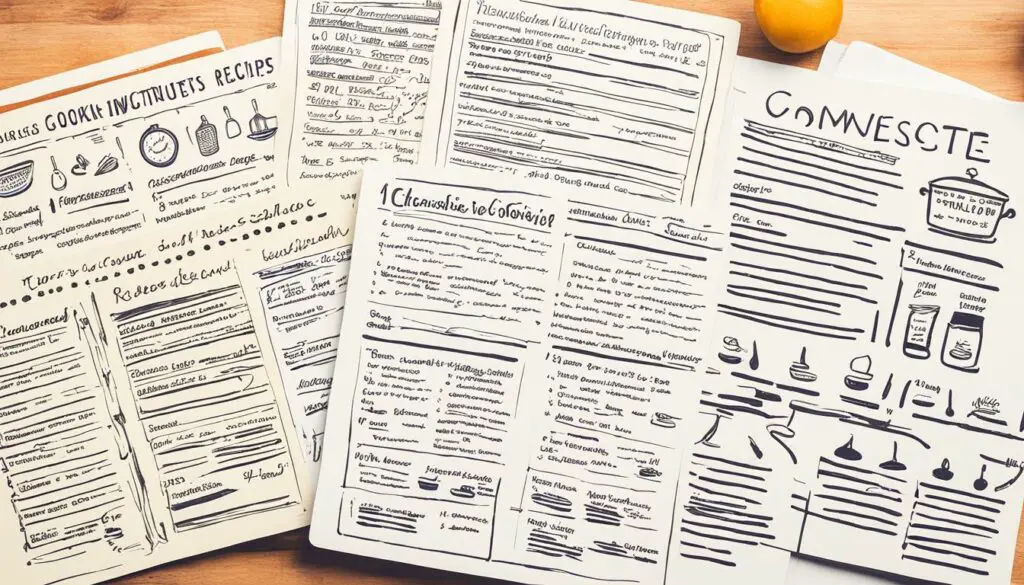
The term “recipe” has become synonymous with cooking instructions, but its origins lie in the Latin word “recipere,” meaning “take these.” Initially used in medical prescriptions to introduce a list of medicines to be taken, the word “recipe” eventually evolved into its present culinary meaning. The abbreviation “Rx” is commonly associated with pharmacies, derived from the imperative form of “recipe.”
This shift in language reflects the changing nature of cooking terminology over time. While the term “receipt” was once widely used to describe cooking instructions, “recipe” gradually replaced it as the preferred term. Today, “recipe” is the commonly recognized word for culinary instructions, offering a streamlined and concise way to share knowledge and techniques in the culinary world.
“Recipe – a term originating from ‘recipere,’ meaning ‘take these.’ Its evolution from medical prescriptions to culinary instructions showcases the dynamic nature of language and the enduring significance of cooking in human culture.”
Use of Receipt in Historical Context
In the culinary world, the terms “recipe” and “receipt” have had intriguing historical associations. In the past, “receipt” was actually the preferred term for cooking instructions. This can be seen in literature and letters from previous centuries, where the term “receipt” was commonly used to refer to recipes. The usage of “receipt” in cooking instructions is a testament to the evolution of culinary practices and language over time.
Notably, some prominent writers, like Emily Post, even distinguished between “recipe” and “receipt,” attributing a more distinguished ancestry to the latter. Emily Post’s book, “Etiquette in Society, in Business, in Politics and at Home,” points out this distinction. However, as modern cooking literature emerged, the term “recipe” increasingly gained popularity and became the more prevalent term for cooking instructions.
“In culinary history, the term ‘receipt’ was commonly used to describe recipes. However, as the world of cooking literature evolved, the term ‘recipe’ became more widely recognized and replaced ‘receipt’ in everyday culinary language.”
This shift in terminology highlights the dynamic nature of language and the influence of cultural shifts on culinary practices. While “receipt” may still be used by older generations or those with a passion for culinary history, “recipe” has become the standard term in modern usage.
To truly understand the historical context of culinary practices, it is important to acknowledge and appreciate the usage of “receipt” in cooking instructions. This historical connection adds depth and richness to our understanding of the culinary world and its ever-evolving terminology.
Regional Variations in Pronunciation
The pronunciation of recipe and receipt may vary depending on regional dialects and accents. These variations in pronunciation can lead to confusion, especially for non-native speakers of English.
Receipt is typically pronounced as “rih-seet.”
Recipe, on the other hand, is pronounced with a long “e” sound, like “reh-suh-pee.”
These regional variations in pronunciation add to the linguistic richness of the culinary world, reflecting the diversity and cultural nuances of different regions. Whether you pronounce it as “rih-seet” or “reh-suh-pee,” the important thing is to understand the meaning behind the words and appreciate the delicious dishes they represent.
Now that we’ve explored the pronunciation of recipe and receipt, let’s dive deeper into the cultural significance of these terms in the next section.
Cultural Significance of Recipes and Receipts
Recipes and receipts have a deep cultural significance as they are often passed down through generations. They serve as a link to the past, preserving family traditions and cherished flavors. The art of cooking is intimately tied to our heritage and history, and recipes play a crucial role in keeping those connections alive.
When we follow a recipe that has been passed down from our ancestors, we not only recreate the flavors of the past but also honor the culinary traditions that have shaped our families. These cherished recipes are treasured heirlooms, containing the secrets and stories of generations gone by.
“Recipes are like a culinary time machine, allowing us to experience the flavors and techniques of our ancestors.”
For older generations, the use of the term “receipt” instead of “recipe” can evoke a sense of nostalgia. While “receipt” may have fallen out of common usage, it harks back to a time when cooking instructions were often referred to as receipts. This terminology adds a touch of authenticity and heritage to the culinary experience, reminding us of the generations before us who used these very same recipes.
The cultural significance of recipes extends beyond individual families. They form an integral part of a region’s culinary identity, showcasing the unique flavors and techniques that have developed over time. Regional recipes reflect the ingredients and cooking customs of a particular area, encompassing the essence of its culture.
To illustrate the cultural significance of recipes and receipts, let’s take a look at a classic American dish: apple pie. This beloved dessert has been passed down through generations, with each family adding their own twists and variations. The recipe for apple pie not only represents the flavors of autumn and the bountiful harvest but also symbolizes the American spirit of home and comfort.
Just as recipes and receipts connect us to our cultural heritage, they also encourage culinary exploration and innovation. Chefs and home cooks alike draw inspiration from traditional recipes, adapting and reinventing them to create new and exciting dishes. This continuous evolution helps to shape the culinary landscape and ensures that our food traditions remain vibrant and relevant.
In summary, recipes and receipts hold immense cultural significance, preserving our culinary history and connecting us to our past. They are more than just instructions for preparing a meal; they are an embodiment of our heritage, traditions, and the flavors that define us. Through the act of cooking, we celebrate our culture and pass on our legacy to future generations.
Modern Usage and Understanding
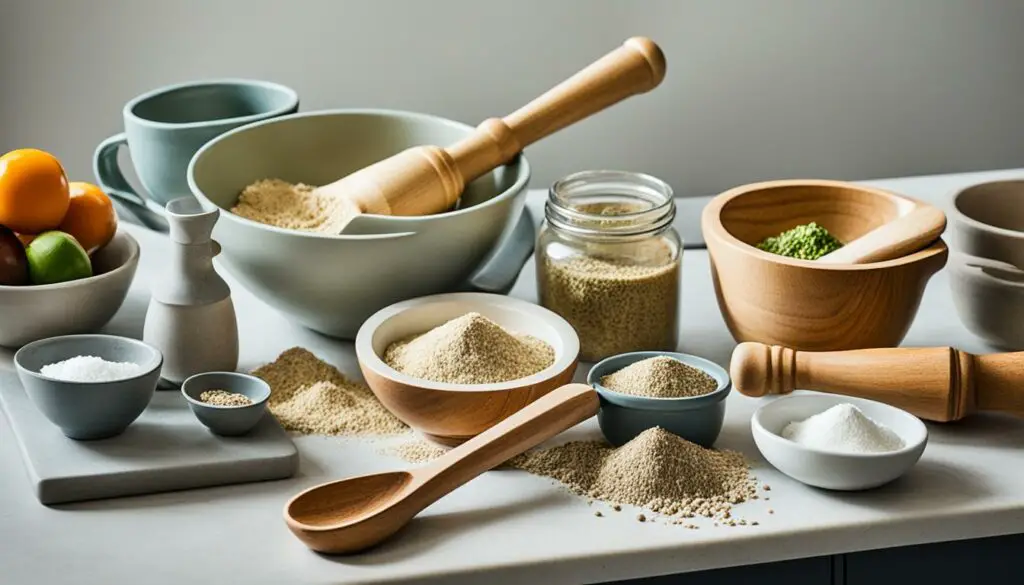
In contemporary culinary terminology, the term “recipe” has become the standard term for cooking instructions. It is widely used in cookbooks, culinary websites, and everyday conversations among cooking enthusiasts. The popularity of “recipe” can be attributed to its simplicity and clarity in conveying the steps and ingredients needed to prepare a dish.
However, it is important to note that there are still individuals who use the term “receipt” to refer to cooking instructions, especially among older generations or those with a deep appreciation for culinary history. This usage reflects the linguistic richness and evolution of the culinary world, where different terms have been used throughout history to describe the same concept.
Understanding the origins and evolution of these terms can help clear up any confusion and foster a deeper appreciation for the culinary arts. By exploring the etymology and historical context of recipes and receipts, we can gain insights into the cultural significance and evolution of food preparation techniques.
Whether you prefer to use the term “recipe” or “receipt” in your culinary endeavors, the important thing is to enjoy the process of creating delicious dishes and savoring the flavors that connect us to our past and present.
Examples of Modern Recipe Usage
Here are a few examples of how the term “recipe” is used in contemporary culinary discourse:
- Recipe books and online recipe databases provide a wealth of culinary inspiration and guidance.
- Cooking websites and blogs offer a wide range of recipes for various cuisines and dietary preferences.
- Home cooks and professional chefs frequently exchange recipes to share their favorite dishes and cooking techniques.
These examples showcase the prevalent usage of “recipe” as the preferred term for cooking instructions in today’s culinary world. However, it is essential to remember that language is ever-evolving, and different individuals may have their own preferences based on personal experiences and cultural backgrounds.
Image: Culinary terminology
Recipe and Receipt in Literature and Media
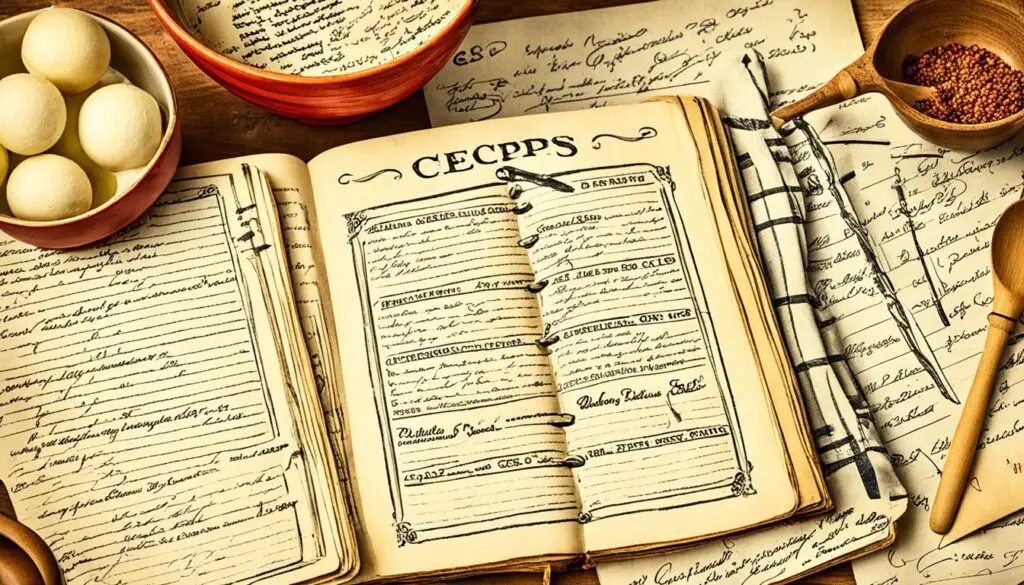
Throughout history, the terms “recipe” and “receipt” have made appearances in various literary works and media, showcasing their significance in culinary culture. Notable writers such as M.F.K. Fisher and Barbara Boissonnas embraced the term “receipt” when describing recipes in their books. This usage not only reflects the language of the time but also adds an element of nostalgia and authenticity to their narratives. In more modern media, the interchangeability of these terms is often acknowledged, but “recipe” has emerged as the more widely recognized term.
“A good cook is like a sorceress who dispenses happiness.” – M.F.K. Fisher
In M.F.K. Fisher’s renowned book “How to Cook a Wolf,” published in 1942, she frequently used the term “receipt” to reference recipes. This deliberate choice resonated with readers, creating a sense of connection to culinary traditions and historical practices. Similarly, Barbara Boissonnas, a leading figure in the modern culinary scene, incorporated the term “receipt” in her book “La Cuisine de Madame Saint-Ange,” emphasizing the historical aspect of the recipes.
In contemporary media, the culinary world has largely embraced the term “recipe” as the standard terminology for cooking instructions. The increasing globalization of food culture and the prevalence of digital platforms have contributed to the widespread adoption of this term. While some writers and chefs may still choose to use “receipt” to evoke a sense of tradition, the general understanding among audiences favors “recipe” as the go-to term.
Overall, the presence of recipe and receipt in literature and media showcases the evolving nature of culinary language. As the culinary world continues to evolve, it’s fascinating to see how these terms have adapted and influenced our understanding of historical recipe naming and cooking terminology.
The Impact of Language: Recipe or Receipt?
The choice between “recipe” and “receipt” in literature and media reflects the influence of language and its ability to evoke specific emotions and connections to culinary traditions. While “recipe” has become the widely accepted term in modern usage, the occasional use of “receipt” adds depth and authenticity to culinary narratives. Whether it’s through the pages of a book or in the digital realm, the power of language shapes our understanding and appreciation of historical recipe naming and cooking terminology.
Keeping Track of Receipts
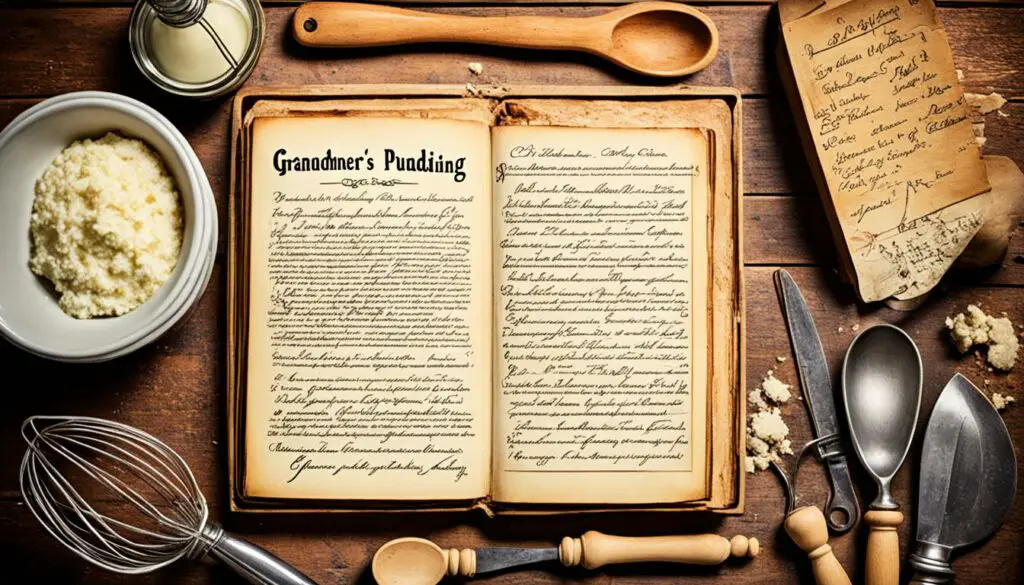
In the culinary world, the term “receipt” is commonly used to refer to a document that acknowledges the payment or purchase of goods or services. While this may differ slightly from its traditional use in cooking instructions, keeping track of receipts is essential for record-keeping and accounting purposes.
When it comes to managing finances, organization is key. Many individuals find it helpful to create a dedicated system for storing and organizing their receipts. This could be as simple as keeping a folder or file specifically for receipts, or utilizing digital tools such as receipt scanning apps or online expense trackers.
During tax season, having a well-organized collection of receipts can make the process smoother and more efficient. By keeping track of receipts throughout the year, you’ll have all the necessary documentation readily available when it comes time to file your taxes.
“Organizing receipts may seem like a tedious task, but it’s an important part of maintaining financial clarity,” says Sarah Johnson, a certified public accountant. “Not only does it make tax time easier, but it also allows you to track your expenses and identify areas where you may be overspending.”
“The key to successfully managing receipts is to establish a routine,” suggests Johnson. “Make it a habit to regularly sort and file your receipts. This way, you can easily locate specific receipts when needed. Additionally, consider digitizing your receipts to reduce paper clutter and make them easily accessible from anywhere.”
By creating a streamlined system for managing receipts, you can stay organized, save time during tax season, and gain a better understanding of your spending habits. Whether it’s keeping a physical folder or utilizing digital tools, finding a method that works for you will ensure that you have a clear record of your financial transactions.
Conclusion
The evolution of the terms “recipe” and “receipt” in cooking instructions reflects changes in language and cultural norms over time. While “receipt” was once the preferred term, “recipe” has taken its place in modern usage. Understanding the historical origins of these terms adds depth to our appreciation of culinary traditions and the power of language in shaping our understanding of food and cooking.
Through the centuries, the distinction between “recipe” and “receipt” has blurred, with “recipe” becoming the more commonly used term for cooking instructions. The word “receipt” has its roots in medieval texts and was initially used to refer to medicinal preparations. Over time, it expanded to include statements documenting financial transactions. As language evolved, “recipe” gained popularity, emerging from Latin and being associated with medical prescriptions before finding its place in the culinary world.
The difference in pronunciation between “recipe” and “receipt” can vary across different regions and accents, adding to the confusion between the two terms. However, in contemporary usage, “recipe” is the preferred term for providing step-by-step instructions and a list of ingredients to prepare a specific dish or food. While some older generations may still use the term “receipt” for recipes, the widespread adoption of “recipe” demonstrates the influence of language and cultural shifts on culinary terminology.
Exploring the historical context of these terms not only deepens our understanding of culinary traditions but also highlights the power of language in shaping our perception of food and cooking. The use of “recipe” in modern cooking literature and media reflects the changing attitudes and preferences in culinary communication. By understanding the evolution of these terms, we can enhance our appreciation for the rich linguistic tapestry that contributes to our culinary experiences.
FAQ
What is the difference between recipe and receipt?
In modern usage, a recipe refers to a set of instructions for preparing a specific dish or food, while a receipt is a record of what has been received as part of a transaction. The terms are often used interchangeably today, but they had different meanings historically.
Where does the word “receipt” come from?
The word “receipt” can be traced back to the Latin verb “recipere,” meaning “to receive or take.” It was used in Chaucer’s Canterbury Tales to refer to a medicinal preparation. Over time, the term expanded its meaning to include a statement documenting the receiving of money or goods.
What is the origin of the word “recipe”?
The term “recipe” originated from the Latin imperative form, meaning “take these.” Originally, it was used in medical prescriptions to preface a list of medicines to be combined. This abbreviation eventually evolved into the symbol “Rx” commonly associated with pharmacies.
How were recipes referred to in the past?
In the past, “receipt” was the preferred term for cooking instructions. It can be seen in literature and letters from previous centuries. However, “recipe” gradually became more widely adopted.
How are recipe and receipt pronounced?
Generally, “receipt” is pronounced as “rih-seet,” while “recipe” is pronounced with a long “e” sound, like “reh-suh-pee.” Pronunciations may vary depending on regional dialects and accents.
Are recipes and receipts culturally significant?
Yes, recipes and receipts hold cultural significance as they often preserve family traditions and cherished flavors. They serve as a link to the past and add a sense of heritage and authenticity to the culinary experience.
What is the modern usage of recipe and receipt?
In contemporary usage, “recipe” is the preferred term for cooking instructions. It is commonly used in cookbooks, culinary websites, and everyday conversations. However, older individuals or those with a passion for culinary history may still use “receipt” to refer to recipes.
How have recipe and receipt been referenced in literature and media?
Writers like M.F.K. Fisher and Barbara Boissonnas used the term “receipt” to describe recipes in their books, reflecting the language of the time. In modern media, the two terms are often acknowledged as interchangeable, but “recipe” has become more widely recognized.
How important is keeping track of receipts?
Keeping track of receipts is important for record-keeping and accounting purposes, especially in financial transactions. Many individuals store their receipts in folders or files, particularly during tax season.
Why is it important to understand the historical origins of recipe and receipt?
Understanding the historical origins of these terms adds depth to our appreciation of culinary traditions and the power of language in shaping our understanding of food and cooking.

